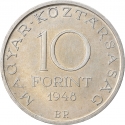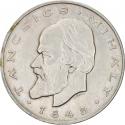You are about to finish your registration. Please check your mailbox (including spam folder). There should be a letter with a confirmation link. Check setting to make sure that your e-mail address is correct.
Send letter againDescription
The Hungarian Revolution of 1848, also referred to as the Hungarian Revolution and War of Independence of 1848–1849, was a pivotal event closely tied to the broader European Revolutions of 1848, particularly in the Habsburg regions. Despite its ultimate failure, it remains a defining moment in Hungary's modern history, shaping the nation's identity. The outbreak of the revolution on March 15th is celebrated as one of Hungary's three national holidays. In April 1848, Hungary enacted a democratic parliamentary election law, becoming the third country in Continental Europe to do so. This law transformed the feudal parliament into a representative body, granting extensive voting rights. However, tensions escalated when Austrian monarch Franz Joseph I revoked these laws arbitrarily, leading to conflict with the Hungarian parliament. The subsequent military intervention and defeat of Hungarian forces by a joint Russo-Austrian army restored Habsburg power and placed Hungary under martial law, marking a significant setback for Hungarian aspirations of independence.
The Second Hungarian Republic (Hungarian: Magyar Köztársaság) was a parliamentary republic briefly established after the dissolution of the Kingdom of Hungary on 1 February 1946 and dissolved on 20 August 1949. It was succeeded by the People's Republic of Hungary.
Engraver: József Reményi
Obverse

|
Depicts the portrait of Petőfi Sándor, his name above, and dates of the Hungarian Revolution of 1848 below. PETŐFI SÁNDOR |
|---|---|
Reverse

|
Depicts the denomination surrounded by the country name (Republic of Hungary), the issue date and the mintmark (BP.) below. MAGYAR KÖZTÁRSASÁG |
| Edge |
Depicts a quotation from Petőfi Sándor's revolutionary poem inscribed: "We swear, we swear" ... "that we will no longer be prisoners" ESKÜSZÜNK, ESKÜSZÜNK |
5 Forint
Second Republic
KM# 537 Unger# 1534 Huszar# 2343 Adamo# EM1
Related coins
100th Anniversary of Hungarian Revolution of 1848
100th Anniversary of Hungarian Revolution of 1848





